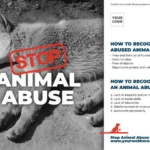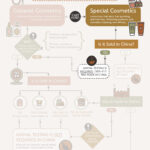Animal cruelty remains a pervasive and insidious issue that affects countless creatures around the globe. Though awareness campaigns and petitions make significant strides towards combatting this injustice, a disconcerting number of people continue to turn a blind eye. Exploring the reasons behind this apathy is crucial, as it illuminates the need for a collective societal shift. Understanding why people ignore animal cruelty is not merely an intellectual exercise; it is a matter of urgent ethical concern that demands immediate action.
One prevalent reason individuals tend to disregard animal cruelty is a lack of awareness. Many people are simply uninformed about the extent and severity of the issue. Animal cruelty can manifest in various forms: neglect, abuse, exploitation for entertainment, and industrial farming practices. Without overtly graphic examples or personal experiences, many remain oblivious to the plight of these innocent beings. Society often relegates animal suffering to the background, overshadowed by more immediate human concerns. As such, educational initiatives play a vital role in raising consciousness about animal rights and the ethical treatment of all living beings.
Moreover, the desensitization experienced by the public due to media portrayal of animal cruelty cannot be overstated. Graphic images and videos are widely circulated, sometimes leading to a numbing effect. When faced with relentless depictions of violence, viewers may unconsciously distance themselves from the narrative—the “here we go again” mentality sets in. Such desensitization fosters an emotional detachment, dulling the urgency with which one might respond to this crisis. This is exacerbated by the notion that animal cruelty is an “inevitable” part of life in certain sectors, including agriculture and entertainment. The normalization of cruelty creates a dangerous disconnect between the observer and the victim.
Furthermore, societal conditioning significantly influences our perceptions of animal welfare. Cultural beliefs, traditions, and habitual norms shape viewpoints on animals and their status as sentient beings. In cultures where certain animals are perceived as commodities rather than companions, especially in industrialized farming practices, the plight of these creatures may be routinely ignored. Various societies place varying emphasis on different species, leading some to be marginalized while others are elevated. This hierarchy further complicates the discourse surrounding animal rights and the ethical obligation to protect all forms of life.
Commercial interests also play a significant role in perpetuating animal cruelty. The meat and dairy industries, entertainment spectacles like circuses and zoos, and even cosmetic testing practices have substantial financial clout. This economic power often drowns out the voices advocating for humane treatment of animals. When faced with corporate lobbyists promoting business as usual, grassroots efforts to champion animal rights frequently appear minuscule. The intersection of greed and cruelty breeds a culture of complacency, where profits are prioritized over ethical considerations.
Moreover, a significant factor in the ability to ignore animal cruelty is the psychological defense mechanism of cognitive dissonance. When individuals are confronted with the harsh realities of animal suffering, their established beliefs may clash. To alleviate the discomfort associated with this dissonance, they may resort to rationalization or denial. This can manifest in a variety of ways, such as downplaying the suffering of animals or convincing oneself that “it’s not as bad as it seems.” Psychological coping mechanisms effectively enable individuals to sidestep the emotional weight that comes with confronting animal cruelty head-on.
Overcoming apathy towards animal cruelty necessitates a multi-faceted approach. Education is paramount; teaching children empathy and the proper treatment of animals from a young age can create a new generation of compassionate individuals. By integrating humane education into school curricula, we can cultivate awareness that blossoms into advocacy. Moreover, engaging storytelling—sharing stories of individual animals, highlighting their struggles, and showcasing compassionate rescue efforts—allows for a personal connection that statistics alone often fail to provide.
Community involvement is equally essential in propelling the movement against animal cruelty. Local initiatives, from animal shelters to advocacy groups, provide platforms that foster active participation. Volunteering, attending protests or community meetings, and fundraising for animal rights organizations can galvanize an entire community around a shared mission. Grassroots campaigns hinge on collective efforts, amplifying voices that call for justice and compassion.
Social media can serve as a powerful conduit for change. The digital landscape offers a unique opportunity to disseminate information swiftly, organizing campaigns that rally support and action. Viral posts and shared stories can break through the walls of indifference and touch hearts, creating a ripple effect. By using these platforms judiciously, activists can create communities that unite individuals across geographical boundaries, rallying them toward a common cause: the fight against animal cruelty.
Ultimately, the battle against animal cruelty is not simply about animals; it mirrors our own humanity. Allowing cruelty to persist reflects a societal failure to embrace empathy, compassion, and morality. The consciousness of our society should evolve to understand that the rights of animals are deeply intertwined with our ethical fabric. Acknowledging this connection is the first step toward a more just and compassionate world where all sentient beings are treated with dignity and respect.
In conclusion, the reasons behind the widespread denial and ignorance of animal cruelty are multifaceted, encompassing everything from lack of awareness to psychological defense mechanisms. However, by instilling compassion through education, mobilizing communities, and using the power of social media, we can foster a society that prioritizes the welfare of all living beings. It is imperative that we collectively rise to the challenge, stepping beyond apathy to create a world in which animals are no longer subjected to suffering.








